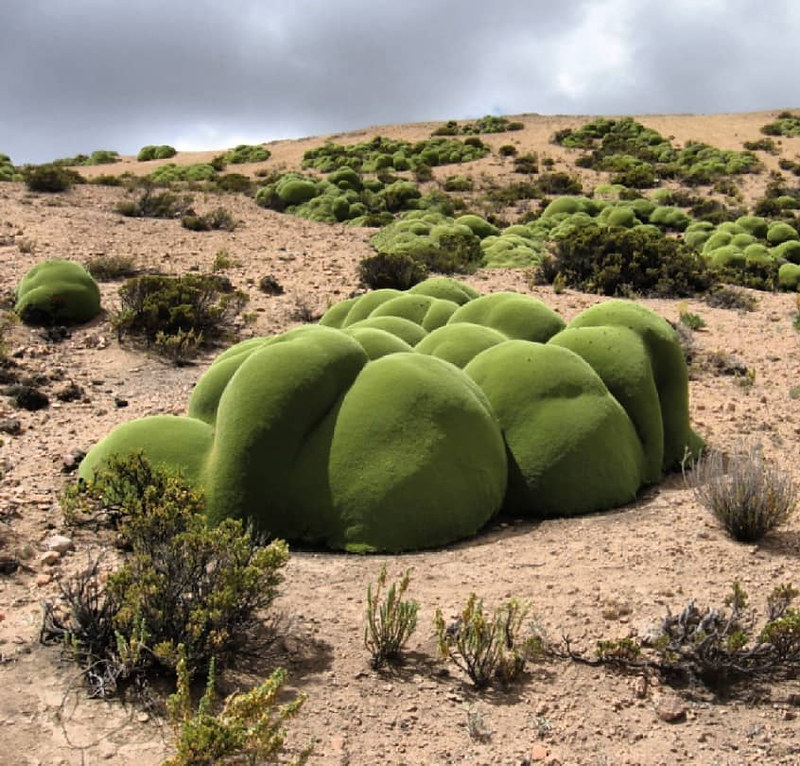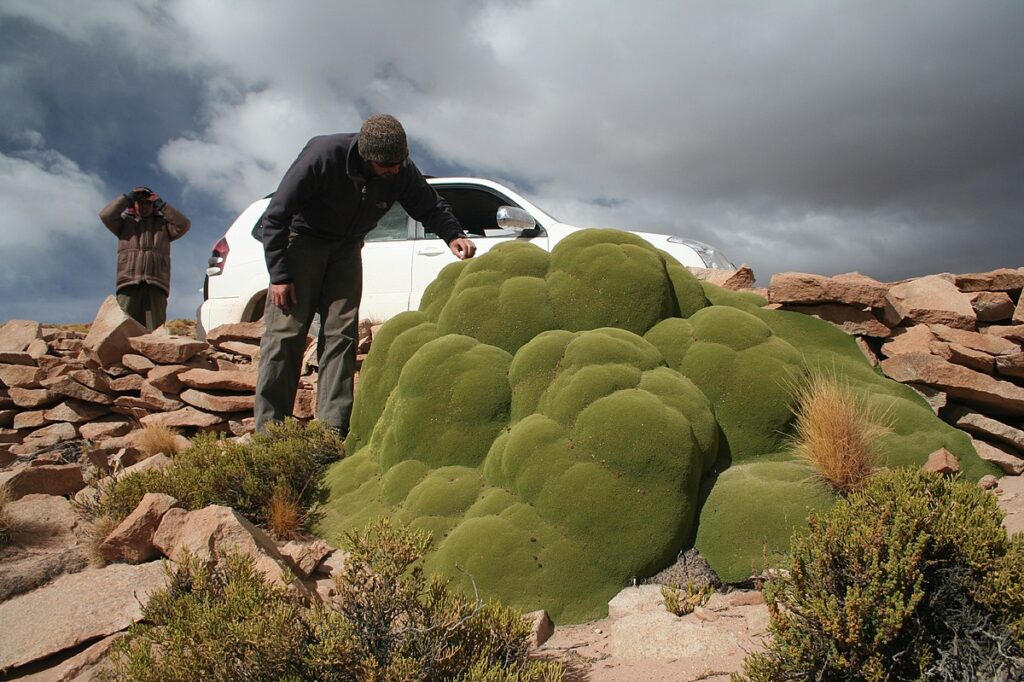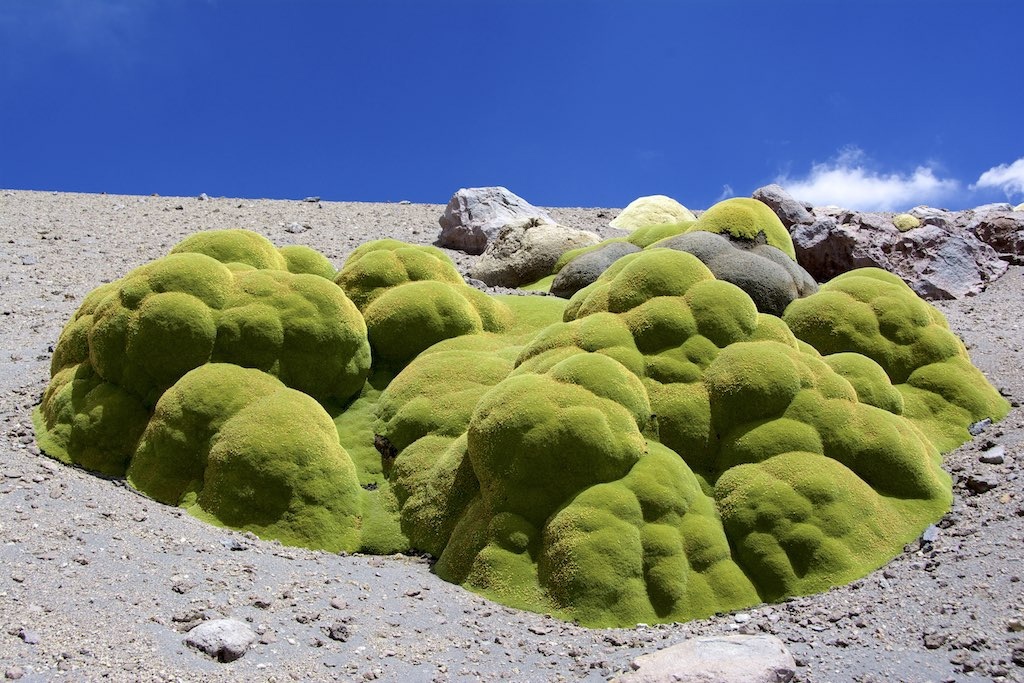
In the high Andes Mountains of Chile and Bolivia, there is a plant that looks like a giant lime-green blob of goo. However, it is far from gooey; in fact, it’s solid to the touch. This plant is called llareta, and it is a member of the Apiaceae family, which makes it a cousin to parsley, carrots, and fennel. But what sets it apart from its relatives is its incredibly slow growth rate. Growing only a little over a centimeter a year, some specimens of llareta are over 3,000 years old, predating the birth of Jesus.

The llareta looks like green gift-wrapping, and one might imagine that it is mold-like, wrapping itself around boulders. However, that is not the case. In reality, the hard surface of the llareta is actually a dense collection of tens of thousands of flowering buds at the ends of long stems, so densely packed that they create a compact surface. It is so dry that it makes great kindling and is even used as fuel to start campfires and run locomotives. It’s also said to be good for muscle pain.
But perhaps the most amazing thing about llareta is how it looks. It is unlike anything else in the world. Climbing up to 10,000 to 15,000 feet into the Andes, you see boulders, loose rocks, and jagged edges all around you, and suddenly you come upon this soft-looking round thing that resembles a lime-green beach ball, and you can’t help but wonder what it is.
Artist and photographer Rachel Sussman, who documented llareta in her new book, describes it as “ludicrously beautiful.” And she’s not alone in her admiration for this ancient plant. Tourists and hikers alike have marveled at the sight of llareta, and it’s easy to see why. It’s a testament to the resilience and adaptability of nature, surviving in one of the harshest environments on Earth for thousands of years.
In conclusion, the llareta may look like a giant green blob of goo, but it’s actually a marvel of nature that has survived for over 3,000 years. It is an excellent example of the beauty and adaptability of nature and a reminder of the incredible things that can be found when we venture out into the world.







Leave a Reply